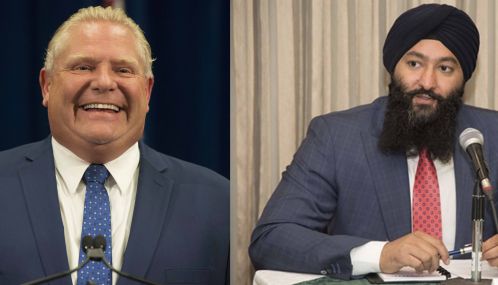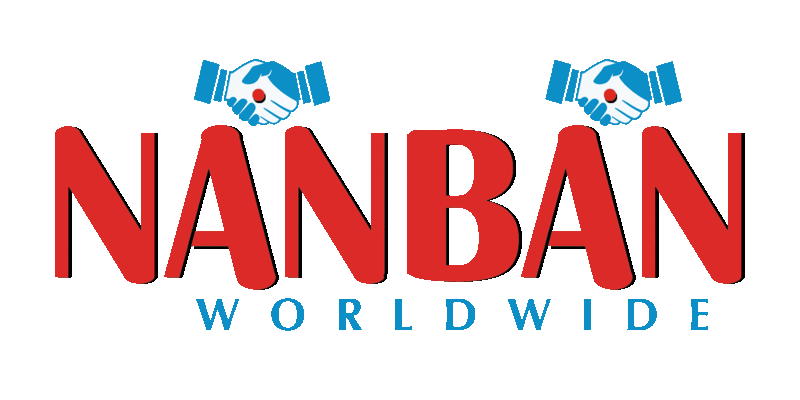Only if our Province is to create more highways and adjust the traffic jams, Ontario and its economy can continue to grow
Share

Ontario Premier mentioned in his letter to the Chairman of the Board of Directors, Metrolinx
எமது மாகாணத்தில் நெடுஞ்சாலைகளை உருவாக்கி, போக்குவரத்து நெரிசல்களை சரிசெய்தால் மட்டுமே ஒன்ராறியோவும் அதன் பொருளாதாரமும் தொடர்ந்து வளர முடியும்
மெற்றோ லிங்க் நிறுவனத்தின் ஒன்றாரியோ முதல்வரும் போக்குவரத்து அமைச்சரும் இணைந்து அனுப்பியுள்ள கடிதம்
மெட்ரோலின்க்ஸ் நிறுவனம் மற்றும் எங்கள் அரசாங்கம் நம்பகமானதும் , உயர்தரமானதுமான சேவைகளை வழங்க கடுமையாக உழைத்து வருகின்றோம்.
ஒன்ராறியோ பயணிகளுக்கான இணைக்கப்பட்ட பிராந்திய போக்குவரத்து அமைப்பு முறையை முன்னைய மாகாண அரசாங்கங்கள் கட்டத் தவறியதன் விளைவுகளை நாங்கள் அறிவோம். முந்தைய அரசாங்கங்கள் எமது மக்களுக்காக முதலீடு செய்ய விரும்பவில்லை எனவே ஒன்றாரியோ மாகாணத்தில் நெடுஞ்சாலைகளை உருவாக்கி, போக்குவரத்து நெரிசல்களை சரிசெய்தால் மட்டுமே ஒன்ராறியோவும் அதன் பொருளாதாரமும் தொடர்ந்து வளர முடியும்
இவ்வாறு ஒன்றாரியோ மாகாணத்தின் முதல்வர் டக் போர்ட் அவர்களும் மாகாணத்தின் போக்குவரத்து அமைச்சர் பிரமீட் சிங் சக்காரியா அவர்களும் இணைந்து அனுப்பிவைத்துள்ள கடிதம் ஒன்றில் குறிப்பிடப்பட்டுள்ளது.
மேற்படி கடிதத்தின் சுருக்கம் கீழே தமிழில் காணப்படுகின்றது. அதன் முழுமையான ஆங்கில வாசகங்கள் இணைப்பில் காணப்படுகின்றது என்பது இங்கு குறிப்பிடத்தக்கது. மெட்ரோலின்க்ஸ் நிறுவனம் மற்றும் எங்கள் அரசாங்கம் நம்பகமானதும் , உயர்தரமானதுமான சேவைகளை வழங்க கடுமையாக உழைத்து வருகின்றோம். ஒன்ராறியோ பயணிகளுக்கான இணைக்கப்பட்ட பிராந்திய போக்குவரத்து அமைப்பு முறையை முன்னைய மாகாண அரசாங்கங்கள்
கட்டத் தவறியதன் விளைவுகளை நாங்கள் அறிவோம். முந்தைய அரசாங்கங்கள் எமது மக்களுக்காக முதலீடு செய்ய விரும்பவில்லைசாலைகள் மற்றும் நெடுஞ்சாலைகளை போக்குவரத்து அல்லது கட்டியெழுப்பாத காரணத்தால் தற்போது ஒன்ராறியோ பயணிகள் போக்குவரத்தில் நரிசல்களில் சிக்கியுள்ளனர், மொத்தத்தில். எங்கள் மாகாண பொருளாதாரத்திற்கு நெரிசல் செலவு சமீபத்தில் ஒவ்வொரு ஆண்டும் 56.4 பில்லியன் டாலராக மதிப்பிடப்பட்டுள்ளது.
ஏமுத அரசாங்கம் எதிர்வரும் 2044 ஆண்டு வரை ரொறன்ரோ பெரும்பாகம் மற்றும் ஹாமில்டன் பகுதியில் நெரிசலின் பொருளாதார செலவு திட்டமிடப்பட்டுள்ளது இதன் விளைவாக 400,000 க்கும் மேற்பட்ட வேலைத்திட்டங்கள் மூன்று முதல் ஐந்து மடங்கு அதிகரிக்க. எங்கள்
ஒன்ராறியோ தொழிலாளர்களுக்கு சிறந்த வேலைகள் மற்றும் அதிகளவு சம்பளங்களை வழங்க அரசாங்கம் செயல்படுகிறது, இது எம்மால் சமாளிக்க முடியாத மற்றும் நாம் ஏற்றுக்கொள்ள முடியாத செலவு என்பதையும் குறிப்பிடுகின்றோம்.
ஒன்றாரியோ அரசாங்கம் என்ற வகையில் நாம் . வட அமெரிக்காவில் மிகப்பெரிய போக்குவரத்து விரிவாக்கத்தை வழங்குகிறோம், 70 பில்லியன் டாலர்களை முதலீடு செய்வது, இரு வழியை விரிவுபடுத்துவது உட்பட, நாள் முழுவதும் கோ ரயில் சேவையை இடங்களுக்கு வழங்க பல திட்டங்களை அறிமுகம் செய்துள்ளோம். ஒன்ராறியோ போன்ற முக்கியமான போக்குவரத்து திட்டங்களை நாங்கள் உருவாக்குகிறோம் டொராண்டோவில் ஒரு சுரங்கப்பாதை, பீல் பிராந்தியத்தில் ஹேசல் மெக்காலியன் பாதை மற்றும் ஹாமில்டன் லைட் ரெயில் போக்குவரத்து திட்டம், மற்றும் ஒன்ராறியோ நார்த்லேண்ட் வழியாக, நாங்கள் ஒன்ராறியோ நார்த்லேண்டரை மீண்டும் கொண்டு வருகிறோம் பயணிகள் ரயில் சேவை, இப்போது டிம்மின்ஸ் மற்றும் கோக்ரேன் வரை எல்லா வழிகளையும் நீட்டிக்கும் திட்டங்கள் இவற்றில் அடங்கும்.
நெடுஞ்சாலை 401 இன் கீழ் ஒரு புதிய இயக்கி மற்றும் போக்குவரத்து சுரங்கப்பாதை அதிவேக நெடுஞ்சாலையை நிர்மாணிப்பதற்கு கூடுதலாக, ஒன்ராறியோவின் பரபரப்பான போக்குவரத்து நடைபாதையில் பயணிகள் செல்ல உதவுவதற்காக, நாம் திட்டமிட்டுள்ளோம்.
எனவே ஒன்றாரியோ மாகாணத்தில் நெடுஞ்சாலைகளை உருவாக்கி, போக்குவரத்து நெரிசல்களை சரிசெய்தால் மட்டுமே ஒன்ராறியோவும் அதன் பொருளாதாரமும் தொடர்ந்து வளர முடியும் என்று குறிப்பிடப்பட்டுள்ளது.
Dear Mr. Wright:
Metrolinx and our government are working hard to deliver the reliable, high-quality and connected regional transit system that Ontario commuters are counting on.
We know the consequences of failing to build. Previous governments’ unwillingness to invest in transit or build roads and highways has left Ontario commuters stuck in traffic, with the total cost of congestion to our provincial economy recently estimated at $56.4 billion each year. By 2044, the economic cost of congestion in the Greater Toronto and Hamilton Area is projected to increase by three to five times, with more than 400,000 lost jobs as a result. As our government works to deliver better jobs and bigger paycheques to Ontario workers, this is a cost we cannot accept.
Our government is acting. We are delivering on the largest transit expansion in North America, investing $70 billion, including to expand two-way, all-day GO train service to destinations across the Greater Golden Horseshoe. We are building critical transit projects like the Ontario Line subway in Toronto, the Hazel McCallion Line in Peel Region and the Hamilton light rail transit project, and through Ontario Northland, we are bringing back the Ontario Northlander passenger train service, which will now extend all the way to Timmins and Cochrane. This is in
addition to the construction of a new driver and transit tunnel expressway under Highway 401, to help get commuters moving along Ontario’s busiest transportation corridor, and the
Ministry of Transportation
Premier ministre de l’Ontario Ministère des Transports
Premier of Ontario
$28 billion our government is investing to build, repair and upgrade roads and highways across the province, including Highway 413 and the Bradford Bypass. To ensure that Ontario and its economy can continue to grow, we need to explore the next generation of GO passenger train service in the Greater Golden Horseshoe – GO 2.0. This
significant, longer-term expansion of GO passenger train service could be enabled by diverting freight rail from existing lines through the construction of a freight rail bypass, previously referred to as the Missing Link, adjacent to the Highway 407 corridor between the Canadian Pacific Kansas City (CPKC) main line near Trafalgar Road in Milton and the Canadian National (CN) bypass line at Bramalea. Exploring the potential of this diversion, along with upgrades to existing freight rail corridors, could enable the expansion of GO train service and provide new
and more convenient transit options for millions of people across southern Ontario.
By leveraging existing freight rail infrastructure, GO 2.0 could help alleviate congestion and reduce travel times for passengers. It has the potential to unlock new GO lines, stations, and Transit-Oriented Communities, supporting the province’s plan to build more homes near transit. GO 2.0 could also connect into local transit, providing greater convenience and connections for commuters across the region.
DIRECTION
Our plan for the generational GO 2.0 project will require substantial cooperation from a variety of partners, including the federal government, which has already indicated its support. Pursuant to authority under the above noted legislative provision, Metrolinx is hereby directed to:
1. Work in partnership with the Ministry of Transportation to initiate a process of engagement with CPKC and CN, as well as the federal government. This strategy should:
a. Reflect the criticality of CPKC and CN’s agreement in principle as a dependent factor in further exploration of the proposal.
b. Reflect the importance of securing CN and CPKC freight operation capacity equal to or greater to its current capacity.
c. Build on the federal government’s stated interest in developing a business case for the Missing Link and reflect its critical role in achieving the substantial benefits of GO 2.0.
d. Acknowledge the federal government’s role in regulating rail safety for Class 1 freight movement in Ontario, as well as support for forward looking transit expansion in Canada’s most populous region, as it explores planning for High Frequency Rail.
e. Identify and obtain any necessary environmental approvals and to fulfil the constitutional duty to consult.
2. Undertake a preliminary assessment of the requirements to plan, design and deliver GO
2.0. This assessment should include:
a. Preliminary analysis of the benefits to passenger rail operations, including increased service along the Kitchener and Milton Corridors, as compared to existing GO Expansion plans, as well as opportunities for increasing passenger
service across the broader rail network.
b. Strategic assessment and comparison of this strategy with existing Kitchener and Milton Corridor work, including impacts to active discussions between Metrolinx and freight partners to advance these priorities.
c. Opportunities for new GO lines, stations, and Transit-Oriented Communities, including benefits from increased connections to local transit.
d. Identification of resource requirements, government approvals, and timelines for completion of an Initial Business Case, should government direct it to proceed.
3. Work with the Ministry of Transportation to identify a timeline to complete the above deliverables to government.
GO 2.0 can be a central component of our ambitious plan to build the roads, highways and transit that will get Ontario commuters out of traffic, with the infrastructure we need to support our continued growth for decades. We look forward to working with Metrolinx to support Ontario commuters on this analysis and other critical transit projects.
Should you have any questions, please do not hesitate to contact Deputy Minister Doug Jones.
Sincerely,
Doug Ford
Premier of Ontario
Prabmeet Singh Sarkaria
Minister of Transportation
c. Michael Lindsay, Interim CEO & President, Metrolinx
Doug Jones, Deputy Minister, Ministry of Transportation
James Pearce, Assistant Deputy Minister, Transit Division
Melissa Djurakov, Assistant Deputy Minister, Oversight and Agency Governance Division



 Roshan’s ‘ Gaanamirtham Fine Arts Academy presented it Annual Program on 04-01-2025 at Richmond Hill Centre for Performing Arts.
Roshan’s ‘ Gaanamirtham Fine Arts Academy presented it Annual Program on 04-01-2025 at Richmond Hill Centre for Performing Arts.



























